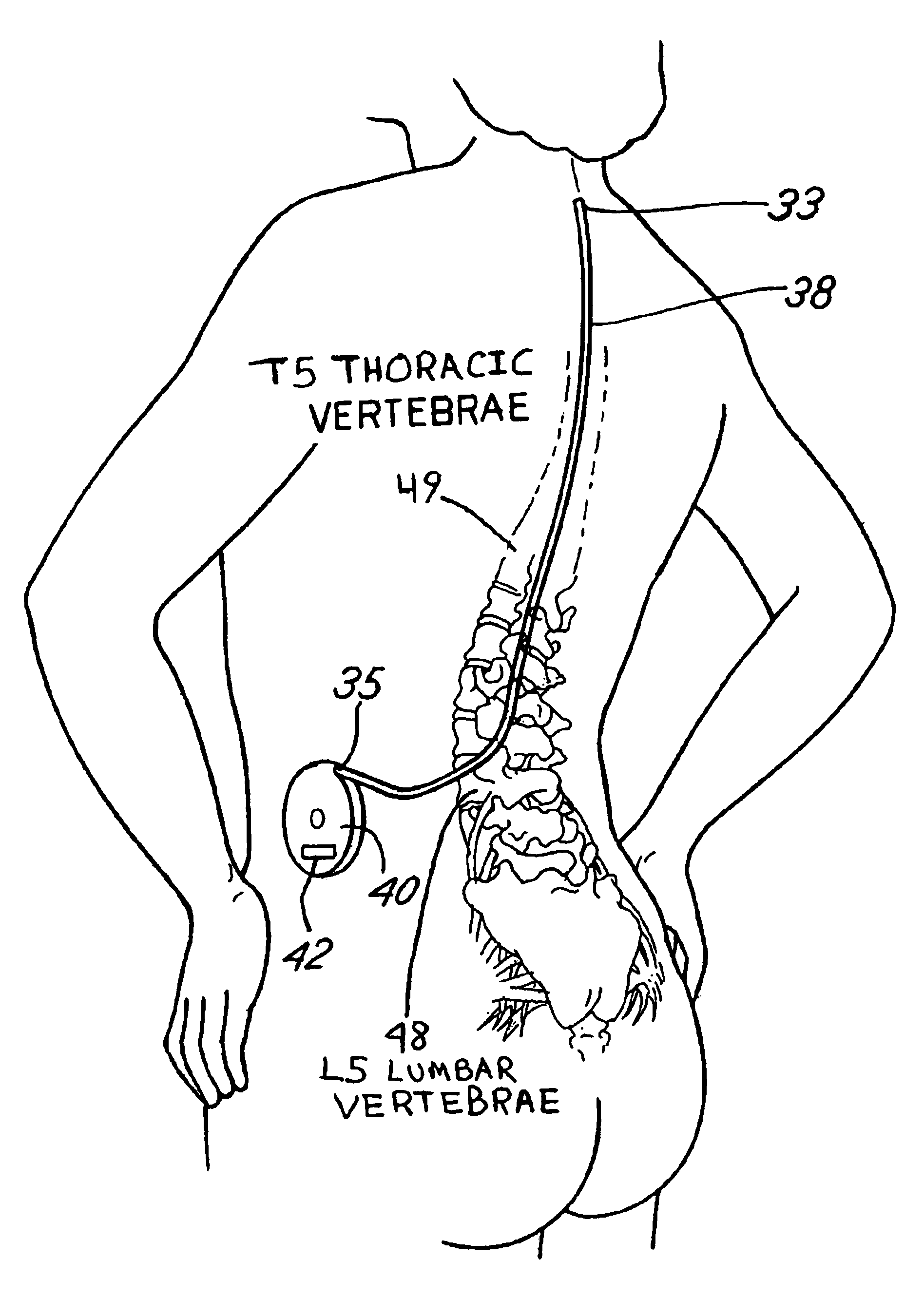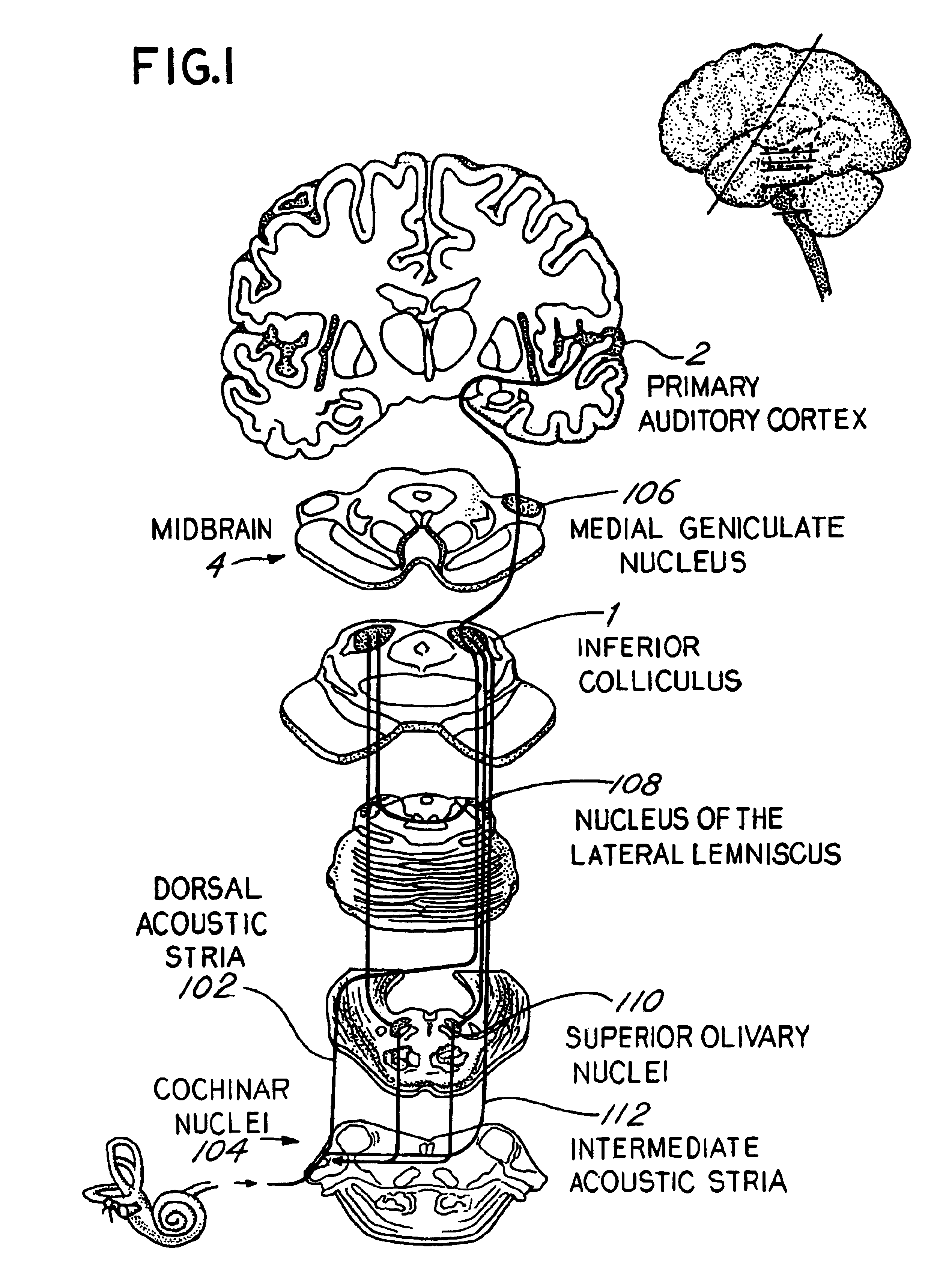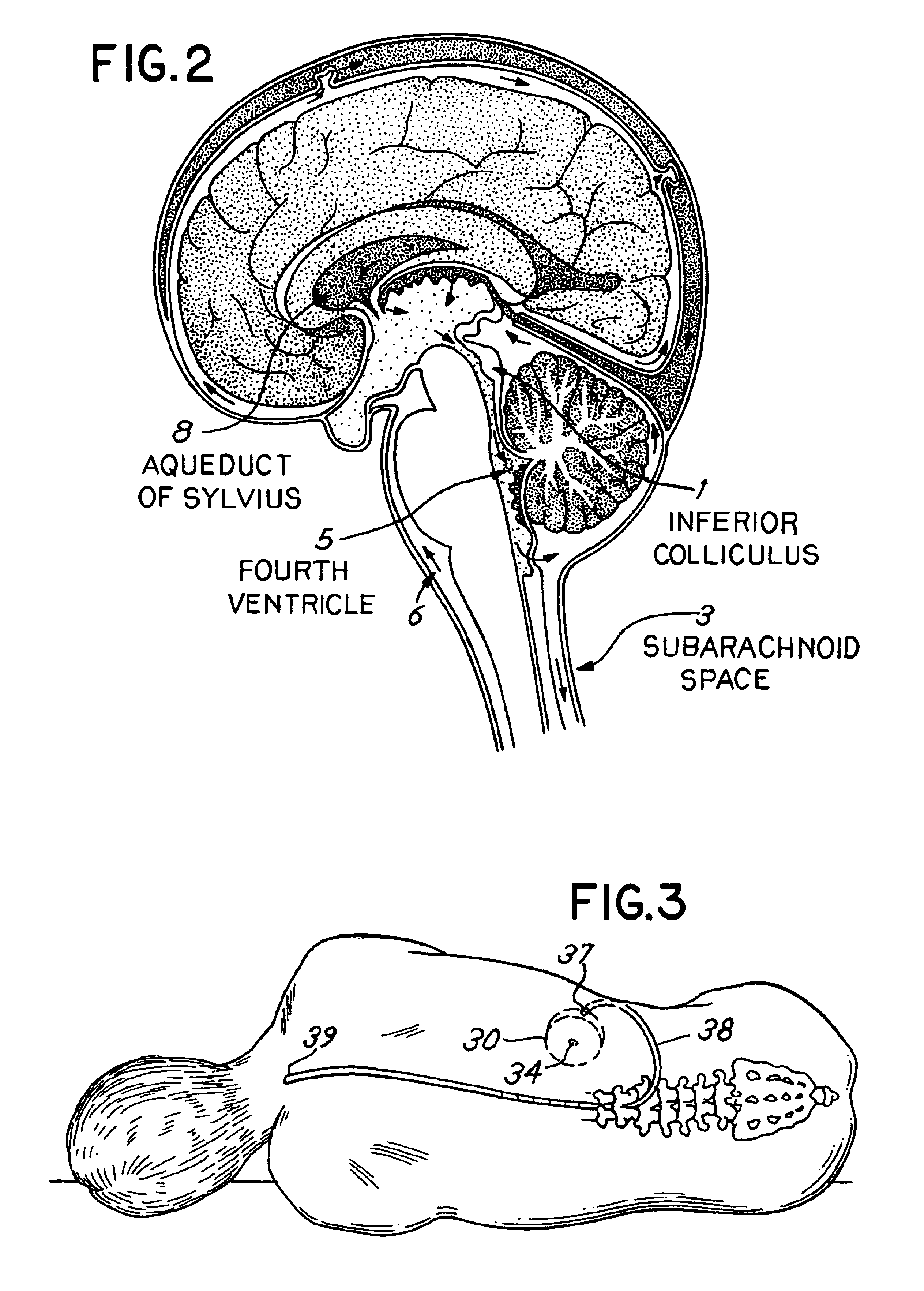Method for treating severe tinnitus
a technology for tinnitus and tetracycline, which is applied in the direction of biocide, heterocyclic compound active ingredients, drug compositions, etc., can solve the problems of suicide, inability to function on a “normal” day-to-day basis, and interfere with the normal working and leisure life of peopl
- Summary
- Abstract
- Description
- Claims
- Application Information
AI Technical Summary
Benefits of technology
Problems solved by technology
Method used
Image
Examples
Embodiment Construction
[0047]As illustrated in FIG. 1, the central auditory pathways comprise, the inferior colliculus 1, the auditory cortex 2, the dorsal acoustic stria 102, the cochlear nuclei 104, the geniculate nucleus 106, the nucleus of the lateral lemniscus 108, the superior olivary nuclei 110, and the intermediate acoustic stria 112. Experimental evidence suggests that the dorsal cochlear nuclei 104, the inferior colliculus 1, and the auditory cortex 2, as shown in FIGS. 1 and 2, may be involved in the generation of tinnitus. Kaltenbach, J. A. (2000). “Neurophysiologic mechanisms of tinnitus.”J Am Acad Audiol 11: 125-137. These major auditory structures are relatively shallow brain structures that lie in close proximity to the subarachnoid space 3 as shown in FIG. 2.
[0048]The inferior colliculus 1 lies on the dorsal surface of the midbrain 4 and rostral (cephalad) to the fourth ventricle 5 and dorsal to the cerebral aqueduct of Sylvius 8. The superficial surface of the inferior colliculus 1 is ba...
PUM
| Property | Measurement | Unit |
|---|---|---|
| concentration | aaaaa | aaaaa |
| concentration | aaaaa | aaaaa |
| concentration | aaaaa | aaaaa |
Abstract
Description
Claims
Application Information
 Login to View More
Login to View More - R&D
- Intellectual Property
- Life Sciences
- Materials
- Tech Scout
- Unparalleled Data Quality
- Higher Quality Content
- 60% Fewer Hallucinations
Browse by: Latest US Patents, China's latest patents, Technical Efficacy Thesaurus, Application Domain, Technology Topic, Popular Technical Reports.
© 2025 PatSnap. All rights reserved.Legal|Privacy policy|Modern Slavery Act Transparency Statement|Sitemap|About US| Contact US: help@patsnap.com



